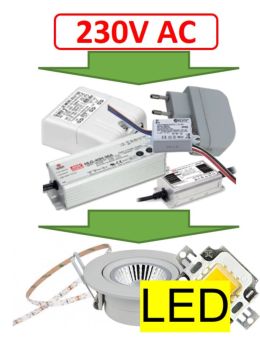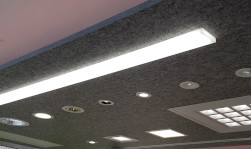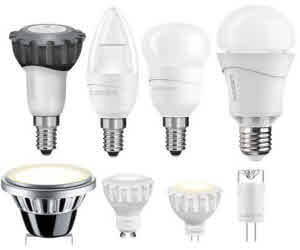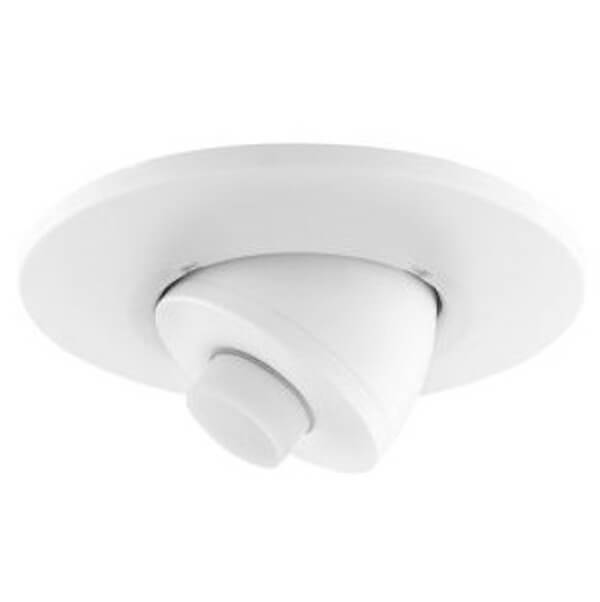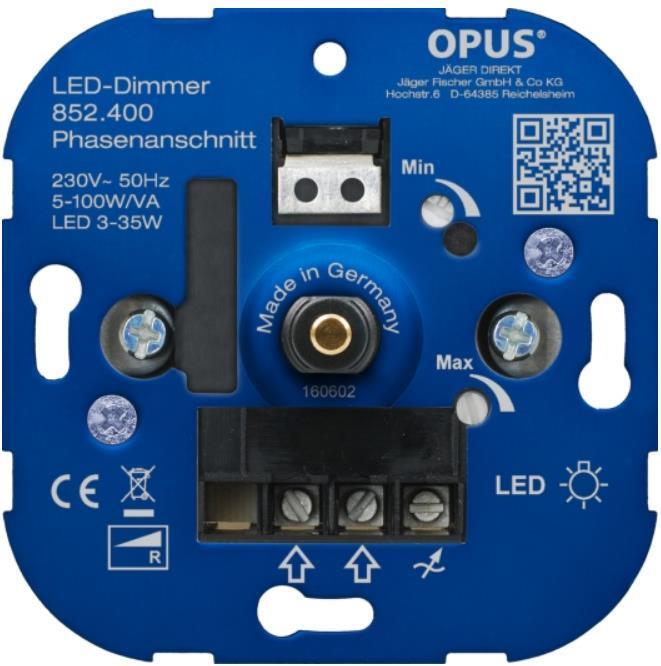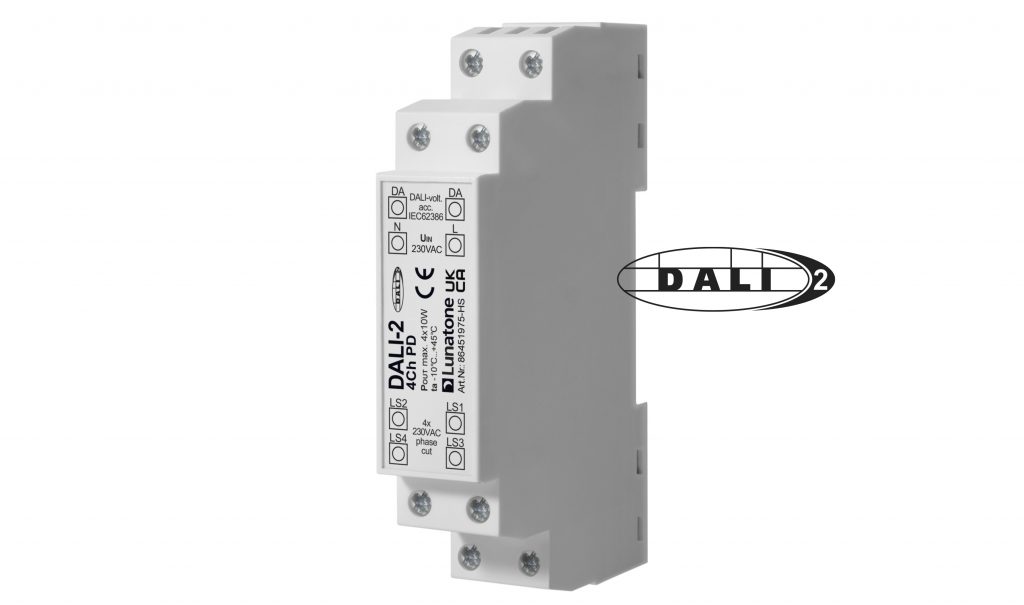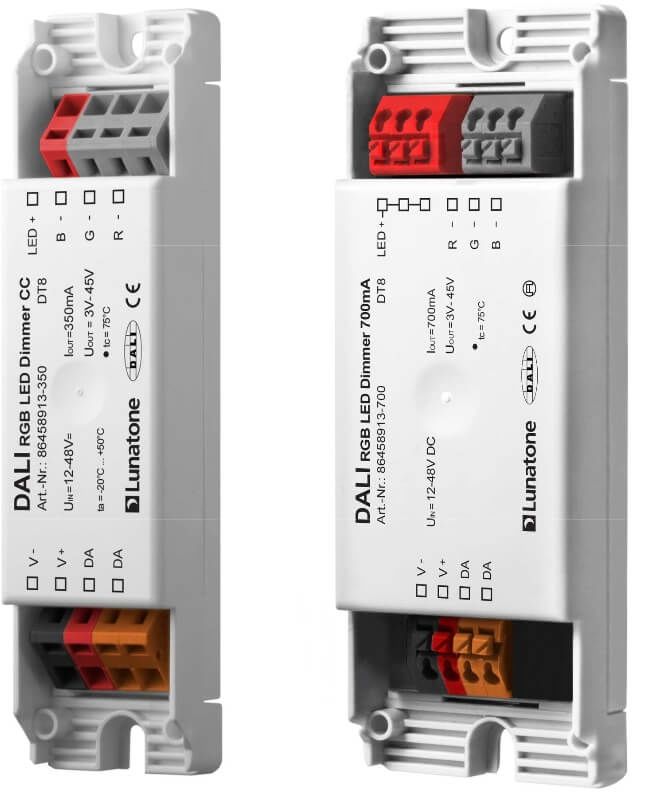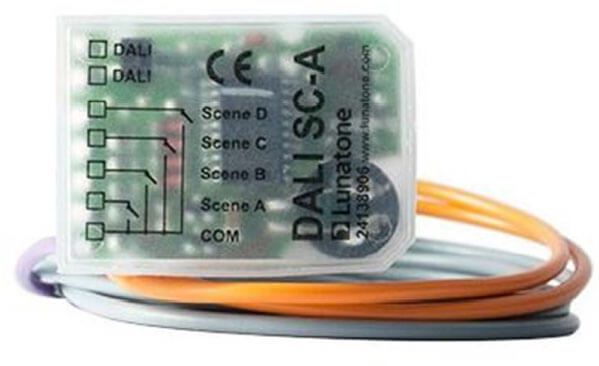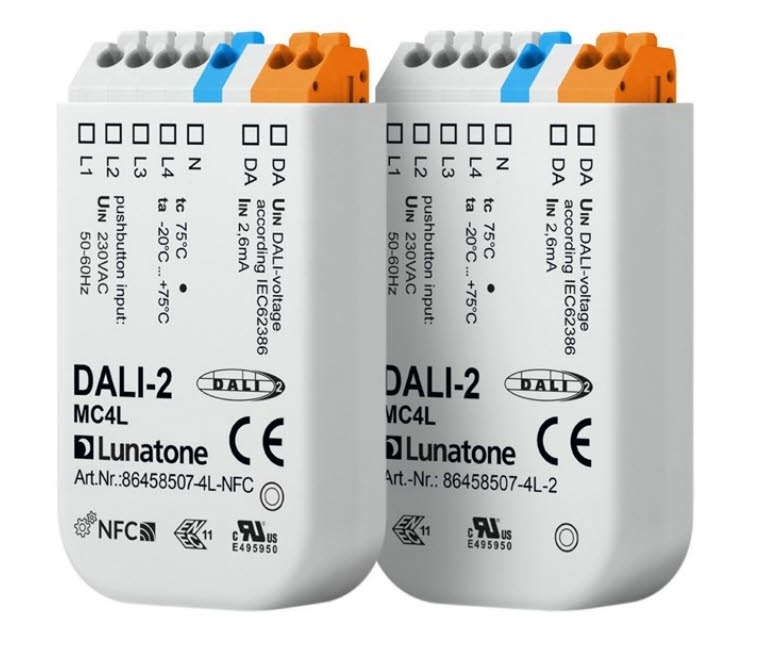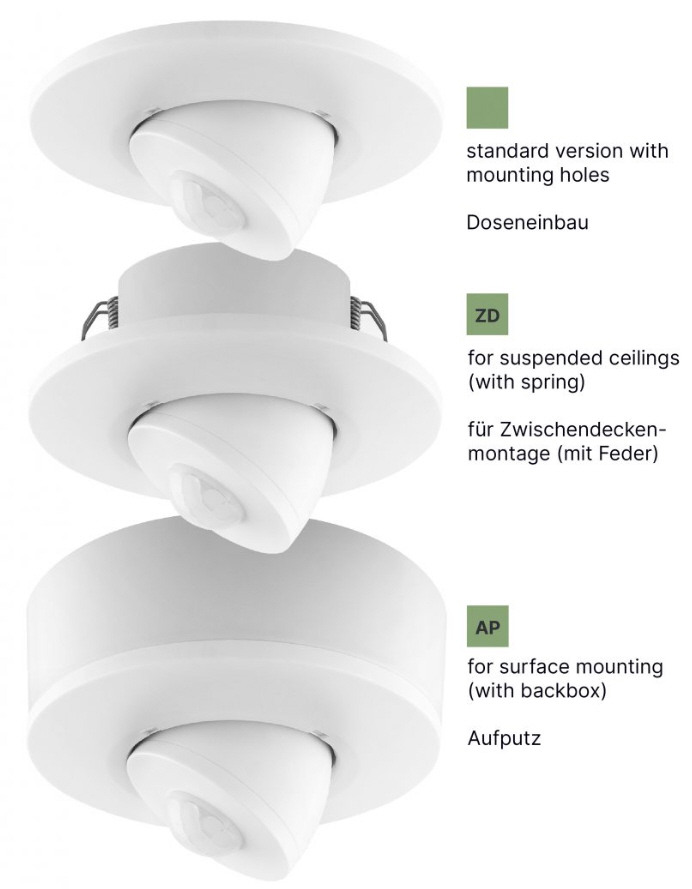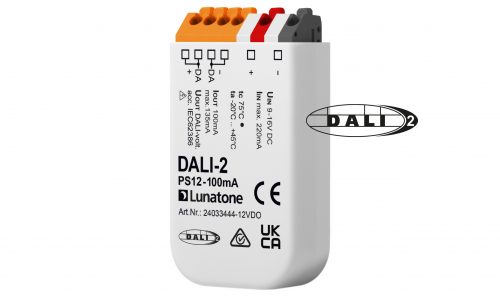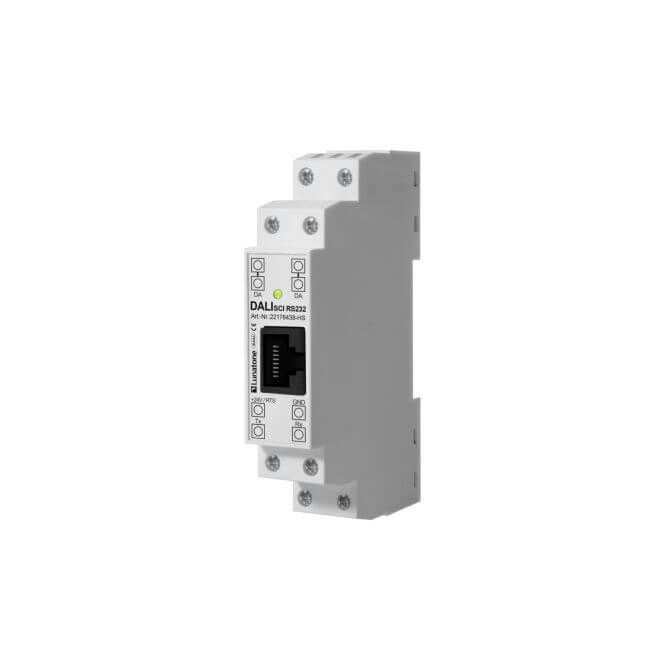Lighting control, especially LED lamps and luminaires, but how?
Via DALI
DALI is a two-wire system which is wired in parallel to the 230V supply. Simply lay the 5-core cable instead of the 3-core cable. Then connect a DALI controller as "boss" to the bus and, if not already in the controller, an additional DALI power supply.
The individual devices can then be addressed and programmed using free PC software and DALI USB adapter.
Via Enocean radio to DALI
If the additional two bus lines mentioned above are missing, Enocean radio will help.The buttons transmit via 868Mhz radio to the Enocean DALI Controller, which then controls the connected lights. Often a bus can be laid in the ceiling afterwards.
Via 1-10V
Well-known conventional technique. The ballasts have an analogue input. An external voltage of 1-10V can be fed in there. The ECG then dims accordingly. The connection is often active, so that the connection of a 100KOhm potentiometer is sufficient.
Attention when connecting ballasts in parallel (several 1-10V inputs in parallel on one potentiometer). The resistance value must then be halved (at 2), divided by three (at 3).
Via phase dimmer
The good old wall dimmers for leading / trailing edge control should have been obsolete long ago, because with the introduction of LED technology they are no longer suitable. They were designed to control resistive loads such as incandescent lamps. Nevertheless, there are also LED ballasts which work more or less with this control. Disadvantage is the low compatibility and limited control. Low values can lead to flickering or sudden shutdown.
About Bluetooth via Casambi
Every smartphone has a Bluetooth interface. It is therefore obvious to simply integrate a corresponding receiver module into the luminaire. Modules in the size of a matchbox have proven themselves with the name Casambi. UAnd for comfort, there is even an attractive Casambi wall switch, which can be mounted as required. Or a Casambi Switch Interface for the flush-mounted box.
Via Digitalstrom
Digitalstrom is actually Powerline-Communication. Instead of the well-known chandelier terminals, similar terminals are now used, but with intelligence. Every electrical consumer is now given a virtually "switch". The corresponding commands are then sent over the power supply line via a central server.
Via DMX
Fast light changes for stage lighting and discos - that is something for the DMX bus. Similar to DALI, all luminaires are connected to a bus system. Only the bus wiring is much more demanding, but very fast. Further detailed information on lighting control can be found here.
Via Zigbee
More and more this sytem becomes famous, because of cheap gateways and components. It is easy to connect into smarthome systems. For easy lighting control find zigbee LED drivers and other zigbee hue devices here.
And many othersThe systems listed above are considered to be widely used and established. In addition, there are many different solutions available on the market, especially with Smart-Home, some of which are stand-alone solutions. Occasionally, these then fall back on the above Standards.
KNX
Is considered the most well-known building automation system. A light products have a direct interface to KNX. In general, however, we recommend to go through a KNX-DALI gateway.
Trelight radio
A manufacturer specific solution for controlling LED strips in particular. Trelight is considered a hassle-free plug & play solution also popularly used for color Control.

